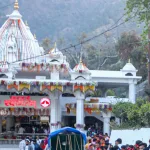In Srinagar city, the unprecedented population growth over the years has put an additional strain on the infrastructures and will in turn result in deficiencies including housing, water supply, electricity, sewerage system, health, public transport and education. Apparently the government as well as different stakeholders seems to suffer from naive understanding of urban governance. Government, derived from Latin ‘gubernare’ which means to steer a ship, and in modern usage refers to all state institutions, laws and customs, is just one, although primary, stakeholder in the governance. The governance itself is all encompassing and has a wider focus and includes all exercises to manage economic and social resources. Besides government, business corporations or private sector and civil society sometimes play greater roles in urban governance. However, the government itself has to call for coordination and work in synergy. The urban mess is visible everywhere. Consider the mushrooming of hotels in the Srinagar city. Along Jhelum, entire vicinities of residential places have been converted in hotels. It continues to be so and is largely encouraged by providing registrations easily and awarding building permissions. Commercialization landscape cannot be hidden behind curtains and mere excuses. Every now and then we are talking about following models, whereas we should have conducted surveys, identified the most important elements of our traditional urban landscape and in implementation would have been more oriented towards conservation rather than total distortion based on economic advantages. Srinagar is marred by a new skyline and as the towering structures would vertically keep on increasing, the sun will eventually disappear from all streets. We are moving towards a familiar landscape, the one with disparities – five star hotels displaying the façade and ghettos at the back. Consider the possibilities, with limited schools and colleges, if the student number increases by a fair margin, would not it affect the overall education? How many admissions for higher studies can be made possible and how many do have to face rejection every year? The hospitals which are chock-full now, with increasing population in Srinagar city and migration of rural households towards city, where is the government planning to accommodate them? Would it not affect the health? It is irony, the UT is producing better and competent administrators who beat all in competitive tests and yet the administrative problems in the UT are accruing year after year. The competition for urban space that is marked by rapid population increase in cities and adjacent towns, haphazard growth, weak policies and poor implementation of master plan, is turning severe with real estate values skyrocketing and administration challenges becoming insurmountable with each passing day.
Need for better urban planning
Sign Up For Daily Newsletter
Be keep up! Get the latest breaking news delivered straight to your inbox.
By signing up, you agree to our Terms of Use and acknowledge the data practices in our Privacy Policy. You may unsubscribe at any time.
Leave a Comment Leave a Comment
Stay Connected
Latest News
Recent Posts
- PM Modi holds talks with Japan Parliament Speaker on India-Japan ties
- CBK Registers Two Separate FIRs against two Notorious Fraudsters in Land Fraud Case
- Delhi Airport issues passenger advisory amid inclement weather forecast
- Shri Mata Vaishno Devi Shrine Board refutes ‘negligence’ claims on pilgrim tragedy
- Jammu-Srinagar Highway Shut for fourth Day, Over 2,000 Vehicles Stranded





